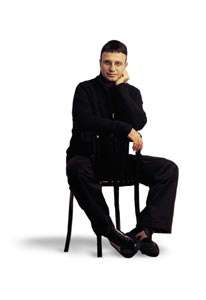Are you a journalist? Please sign up here for our press releases
Subscribe to our monthly newsletter:
 principal pictures of a face%2C right.jpg)
Be it sunny or overcast, at a candlelit dinner or a picnic, you will recognize a familiar face. The intensity or direction of the light will rarely influence recognition, which is quick and natural to us thanks to a powerful mechanism: the human brain. Computers, on the other hand, have trouble identifying objects lit from different angles or at changing intensities.
To a computer, an image is no more than a list of numbers describing the brightness of every dot in a picture. It is easy to comprehend, then, why computers have difficulty recognizing an object lit in various ways, especially since the complexity of lighting conditions is unlimited. Prof. Ronen Basri of the Weizmann Institute’s Computer Science and Applied Mathematics Department seeks to improve the vision of computers – in particular, their ability to recognize objects portrayed in images.

Basri and his colleagues have shown that in many cases the images of an object obtained under a variety of lighting conditions cover a nine-dimensional space. Thanks to this phenomenon, the three-dimensional structure of an object can be studied by obtaining a mere nine pictures of it or, with somewhat less accuracy, even fewer. The object can then be identified in other pictures, regardless of varying lighting conditions. This algorithm has applications in a variety of industrial fields and could result in improved security surveillance systems and advanced robotic visual systems.